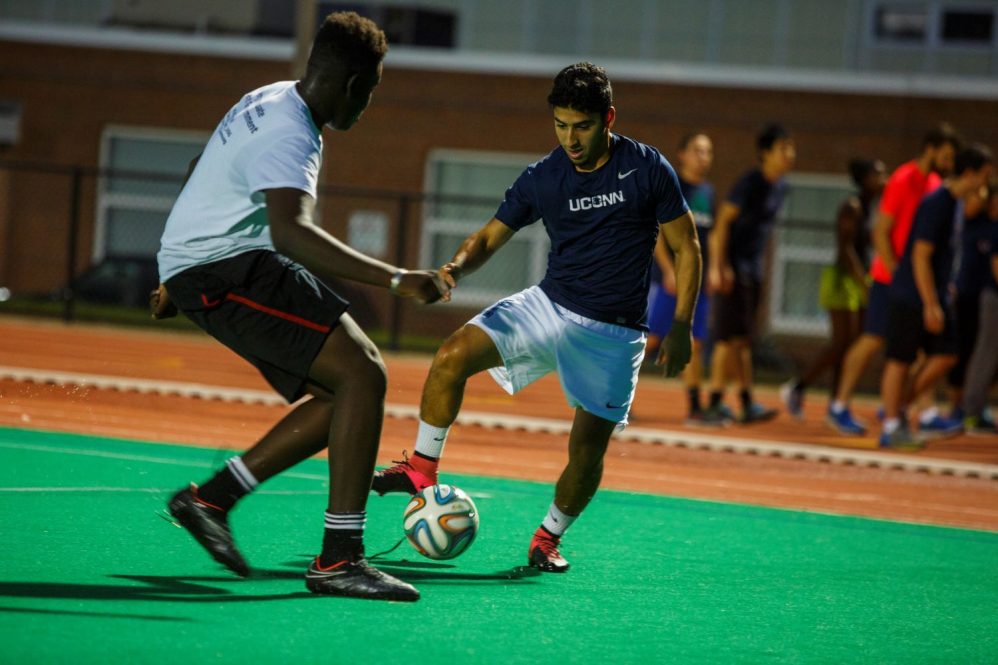When an athlete is sidelined due to injury, the focus is on rehabilitating their body. Julie Burland ’12, ‘19, the director of research at UConn’s Institute for Sports Medicine works to help athletes return to sport with an eye to both their physical and mental health.
“Injuries can be traumatic. There can be long-lasting mental and emotional repercussions for these athletes. We want to consider all aspects of their well-being when we develop care,” says Burland, a two-time UConn alum.
The institute is a collaboration between the Department of Kinesiology in the College of Agriculture, Health and Natural Resources and UConn Health, collectively offering expertise from researchers like Burland, sports medicine specialists from the UConn Musculoskeletal Institute, athletic trainers, and physical therapists.
The institute is currently working to establish a patient registry to collect outcome data. This will help institute practitioners and researchers ensure they are using the best practices for their patients.
“We’re hoping the Institute for Sports Medicine becomes the central hub in Connecticut for people to come to get their care and return to sport as safely and effectively as possible. My role is to push research initiatives forward,” says Burland.
Burland’s own research program studies the recovery of neuromuscular function and psychosocial factors that influence outcomes after ACL reconstruction. She is particularly interested in the often-under-studied psychological aspects of recovery.
Recovering from a sports-related injury like an ACL tear involves both physical and mental rehabilitation.
Burland says it’s important to consider the “whole athlete” perspective when determining how to best help an athlete return to sport and ensure their long-term wellness.
“In the past few years that factor [mental wellbeing] has come out as something important to consider,” Burland says. “That’s been a really unique perspective to tie into my research.”
Burland received her bachelor’s degree in athletic training from UConn in 2012. While conducting research for her master’s degree at the University of Kentucky, Burland began to uncover the importance of mental wellbeing in sports injury recovery.
“I found it really, really interesting to talk to people and found a lot of the reason wasn’t because they weren’t physically ready, but because they were fearful,” Burland says.
For her dissertation at UConn, Burland investigated the connection between the nervous system and physical wellness and developed interventions to support both.
With injuries like an ACL tear, the physical elements of the injury can have long-term impacts on a patient’s nerves.
The swelling and pain associated with these injuries change sensory receptors. This causes the receptors to send inaccurate information up the spinal cord to the brain, making the brain think the person is still injured even as they are physically recovered. This can lead to a patient avoiding use of the injured body part. This can cause improper healing and make returning to sport more difficult.
Some interventions shown to improve psychological outcomes include cognitive behavioral therapy and positive self-talk aimed at increasing the player’s sense of self efficacy.
Now, Burland is studying female college soccer players to see how sensors and biomarkers can help predict and prevent injury on the field. This $50,000 grant is supported by the Arthroscopy Association of North America.
The players will wear sensors that measure impact load when they hit the ground running or jumping. This is an important predictor of ACL and other common soccer injuries.
Burland will also look at biomarkers measuring cartilage turnover. If this level is high, it means the player’s body is working overtime to replace cartilage damaged by excessive impact.
Burland will correlate these two variables to see how well they both predict injury. This research will pave the way for developing interventions to help prevent injuries in this population.
“Those would push future research forward by establishing threshold measures for sustaining injuries,” Burland says. “We’re excited to break new ground with these athletes and apply what we learn to patients at UConn’s Institute for Sports Medicine.”
Follow UConn CAHNR on social media



